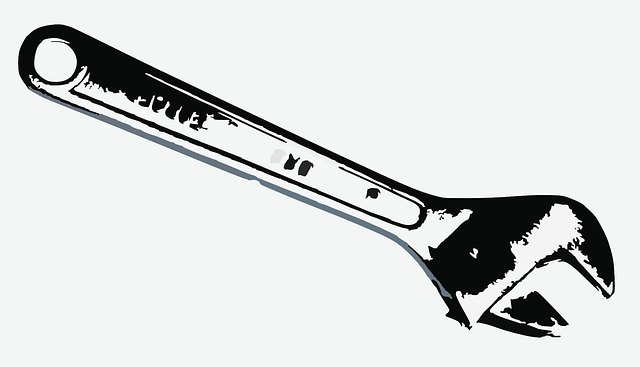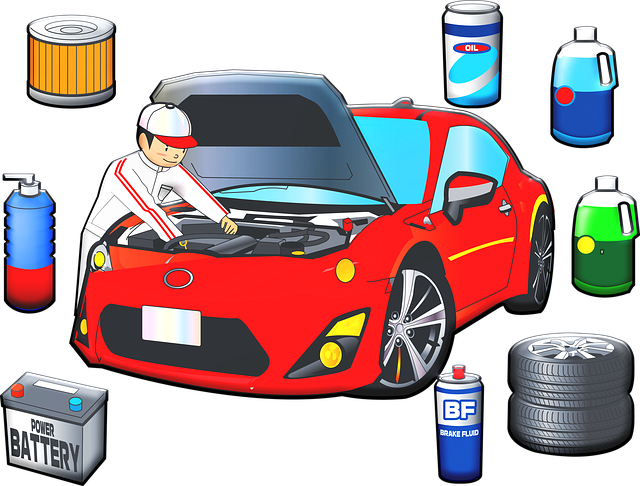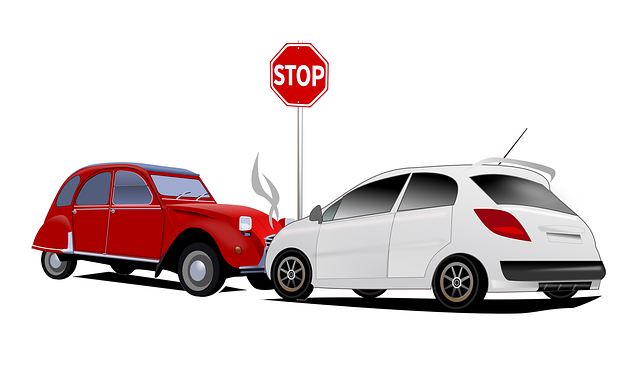Modern Vehicles: Ensuring Safety with Strict OEM Repair Access
Accessing and strictly adhering to OEM (Original Equipment Manufacturer) repair procedures is vital…….
In today’s rapidly evolving manufacturing landscape, the concept of Original Equipment Manufacturer (OEM) repair procedure access has emerged as a pivotal strategy for fostering sustainability, cost-efficiency, and product longevity. This comprehensive guide aims to unravel the intricacies of this topic, offering readers a detailed understanding of its importance, applications, and the global impact it is having on various industries. By exploring each facet of OEM repair procedure access, we will uncover how this approach revolutionizes traditional manufacturing practices and contributes to a greener, more resilient future.
Definition: OEM repair procedure access refers to the practice of granting or providing authorized third-party access to an Original Equipment Manufacturer’s (OEM) repair procedures, technical documentation, and knowledge bases. This access enables skilled technicians and repair shops to service and repair products independently, promoting a circular economy model.
At its core, this concept revolves around three key components:
Repair Procedures: Detailed step-by-step guides that outline the process of disassembling, repairing, and reassembling a product, ensuring it functions as intended.
Technical Documentation: Includes schematics, diagrams, parts lists, and other supporting materials that offer insights into the product’s design, assembly, and operation.
Knowledge Base: A repository of accumulated knowledge, troubleshooting tips, and best practices shared by the OEM, fostering a community of skilled repair professionals.
Historically, OEMs have guarded these resources closely, often restricting access to ensure control over after-sales services and parts sales. However, growing environmental concerns, consumer demand for more sustainable products, and technological advancements have driven a paradigm shift. Now, many OEMs are embracing the concept of repairability and sharing their expertise to promote responsible consumption and production.
The influence of OEM repair procedure access is felt worldwide, with diverse regions adopting this approach at varying rates. Key trends shaping its global trajectory include:
Europe: Leading the charge in sustainable manufacturing, the European Union has implemented stringent waste reduction policies, encouraging OEMs to embrace repairability. The EU’s Circular Economy Action Plan aims to boost the repair and reuse of products, with many major OEMs responding by opening up their repair procedures.
North America: Driven by consumer advocacy groups and growing awareness of e-waste issues, North American companies are starting to prioritize repairability. Major tech giants, such as Apple and Dell, have recently released some technical documentation, signaling a shift in industry practices.
Asia Pacific: Rapid industrialization and a young, tech-savvy population make this region a significant player. Countries like Japan and South Korea have long promoted repair culture, while China is seeing a surge in DIY (Do-It-Yourself) repairs and third-party repair services due to stringent electronic waste management regulations.
The economic implications of OEM repair procedure access are multifaceted, impacting various sectors:
| Sector | Impact |
|---|---|
| Consumer Electronics: Increased repairability can extend the lifespan of devices, reducing the need for frequent upgrades and stimulating the secondary market for pre-owned products. | Higher consumer savings, reduced electronic waste |
| Automotive: Encouraging independent repairs can lower vehicle maintenance costs for owners while providing additional revenue streams for mechanics and repair shops. | Improved accessibility to affordable repairs, potential job creation in local repair industries |
| Medical Devices: Access to repair procedures can ensure the continued functionality of critical medical equipment, enhancing patient care and safety. | Reduced downtime, improved healthcare system efficiency |
| Textile Manufacturing: Promoting repairability in clothing and footwear encourages a more sustainable fashion industry, reducing waste and the environmental impact of fast fashion. | Increased consumer loyalty, potential for new business models centered around repair and upcycling |
Technological innovations play a crucial role in enhancing OEM repair procedure access:
Digital Documentation: The digital transformation of repair procedures and documentation allows for easy updates, real-time access, and collaborative sharing. Cloud-based platforms enable OEMs to distribute information globally, ensuring up-to-date access for authorized users.
Augmented Reality (AR) Repair Guides: AR technology overlays digital instructions onto physical products during repair, providing step-by-step visual guidance. This innovative approach streamlines the repair process, making it more accessible and efficient.
Computerized Maintenance Management Systems (CMMS): These software tools streamline maintenance and repair operations by digitizing workflows, tracking inventory, and facilitating knowledge sharing among technicians. CMMS platforms can integrate with IoT (Internet of Things) devices for predictive maintenance, further optimizing repair processes.
Governing bodies worldwide are recognizing the importance of promoting repairability through policy interventions:
EU’s Right to Repair: The EU has passed legislation mandating that manufacturers provide consumers with the right to repair their products, including access to repair documentation and replacement parts. This law aims to extend product lifespans and reduce e-waste.
US State-Level Initiatives: Several US states have introduced ‘right to repair’ bills, encouraging transparency in product design and access to repair information. These policies gain support from consumers and independent repair advocates.
China’s Green Plan 2030: As part of its environmental agenda, China is promoting the circular economy, including encouraging manufacturers to design products for longevity and repairability. This shift aligns with global sustainability goals.
Despite its numerous benefits, OEM repair procedure access faces several challenges:
Intellectual Property Concerns: OEMs worry about knowledge leakage and potential competition from third-party repair services. Balancing the need for repair accessibility with IP protection is a complex issue.
Safety and Quality Standards: Ensuring that unauthorized repairs meet safety and quality standards is crucial, especially in industries like healthcare and automotive. Implementing testing and certification processes can be challenging for independent repair shops.
Consumer Awareness: Educating consumers about the benefits of repairing products instead of replacing them is essential but poses a challenge in a culture that often prioritizes convenience over sustainability.
Proposed Solutions: To overcome these challenges, collaborative efforts between OEMs, governments, and industry bodies are necessary:
Apple, a tech giant known for its tightly controlled ecosystem, surprised the industry by partnering with iFixit, a leading repair resource provider. This collaboration resulted in Apple releasing detailed repair manuals and parts replacement guides for many of its products. The move has been hailed as a significant step towards increasing consumer repairability and transparency. iFixit’s comprehensive documentation makes it easier for consumers to understand their devices and perform basic repairs, reducing the reliance on official service centers.
In the automotive sector, Volkswagen implemented an innovative approach by creating an open repair network that allows independent mechanics to access digital repair information for its vehicles. This initiative promotes competition while ensuring safety standards are met. By providing access to procedures and diagnostics tools, Volkswagen enables local garages to offer competitive pricing for repairs, enhancing consumer choice and accessibility.
Philips, a leading lighting manufacturer, launched an innovative repair program for its LED light bulbs. Consumers can now return used bulbs for recycling or repurposing through a convenient online platform. This program not only extends the life of their products but also reduces electronic waste. By offering a straightforward repair and recycling solution, Philips is fostering a more sustainable mindset among consumers.
The future of OEM repair procedure access looks promising, with several emerging trends shaping its trajectory:
Global Standardization: Efforts to create international standards for repairability are gaining momentum. Organizations like the International Organization for Standardization (ISO) are developing guidelines to ensure safe and effective repairs across borders.
Blockchain Technology: Blockchain has the potential to revolutionize repair procedure access by providing secure, transparent, and tamper-proof records of product history, maintenance records, and warranty information.
AI-Powered Repair Assistance: Artificial Intelligence (AI) can analyze vast amounts of repair data to identify patterns, predict failures, and provide intelligent troubleshooting assistance to technicians.
Extended Producer Responsibility (EPR): Many countries are adopting EPR policies that make OEMs responsible for the entire lifecycle of their products, including proper disposal and recycling. This will further incentivize manufacturers to design products for repairability and sustainability.
OEM repair procedure access is transforming the way we approach manufacturing, fostering a more sustainable, resilient, and circular economy. By sharing knowledge, promoting repairability, and collaborating with various stakeholders, OEMs are playing a pivotal role in reducing electronic waste, lowering carbon footprints, and empowering consumers. As global awareness of environmental issues continues to grow, this trend will only accelerate, shaping the future of manufacturing and consumer behavior.
Q: How does OEM repair procedure access benefit consumers?
A: It provides consumers with the right to repair their products, often at lower costs, extending product lifespans and reducing electronic waste. It also empowers them to understand and maintain their devices, fostering a more informed consumer culture.
Q: Are there any risks associated with DIY repairs?
A: While DIY repairs can be cost-effective, they may pose risks if performed incorrectly. Always follow reliable repair guides and seek professional help for complex procedures to ensure safety and effectiveness.
Q: How does this concept impact product warranties?
A: OEMs may offer extended warranties or revised warranty policies that consider independent repairs. Some manufacturers are even including ‘do-it-yourself’ repair kits with their products, empowering consumers to perform basic maintenance.
Q: Can third-party repair services compete with official service centers?
A: Absolutely. With the right resources and expertise, third-party repair shops can offer competitive pricing and convenient locations, challenging official service providers for market share.
Q: What role do governments play in promoting OEM repair access?
A: Governments worldwide are implementing policies that mandate ‘right to repair’ rights, set safety standards, and incentivize manufacturers to design products with repairability in mind. These measures drive industry-wide changes and encourage a culture of sustainability.

Accessing and strictly adhering to OEM (Original Equipment Manufacturer) repair procedures is vital…….

The EV revolution demands specialized maintenance with consistent access to Original Equipment Manuf…….

Understanding OEM repair procedure access for hybrid and electric vehicles (EVs) is vital as these c…….

Access to Original Equipment Manufacturer (OEM) repair procedures is crucial for insurance adjusters…….

Accessing OEM (Original Equipment Manufacturer) repair procedures is a significant advantage for col…….

Access to Original Equipment Manufacturer (OEM) repair procedures is vital for calibrating Advanced…….

Accessing Original Equipment Manufacturer (OEM) repair procedures for hybrid and electric vehicles i…….